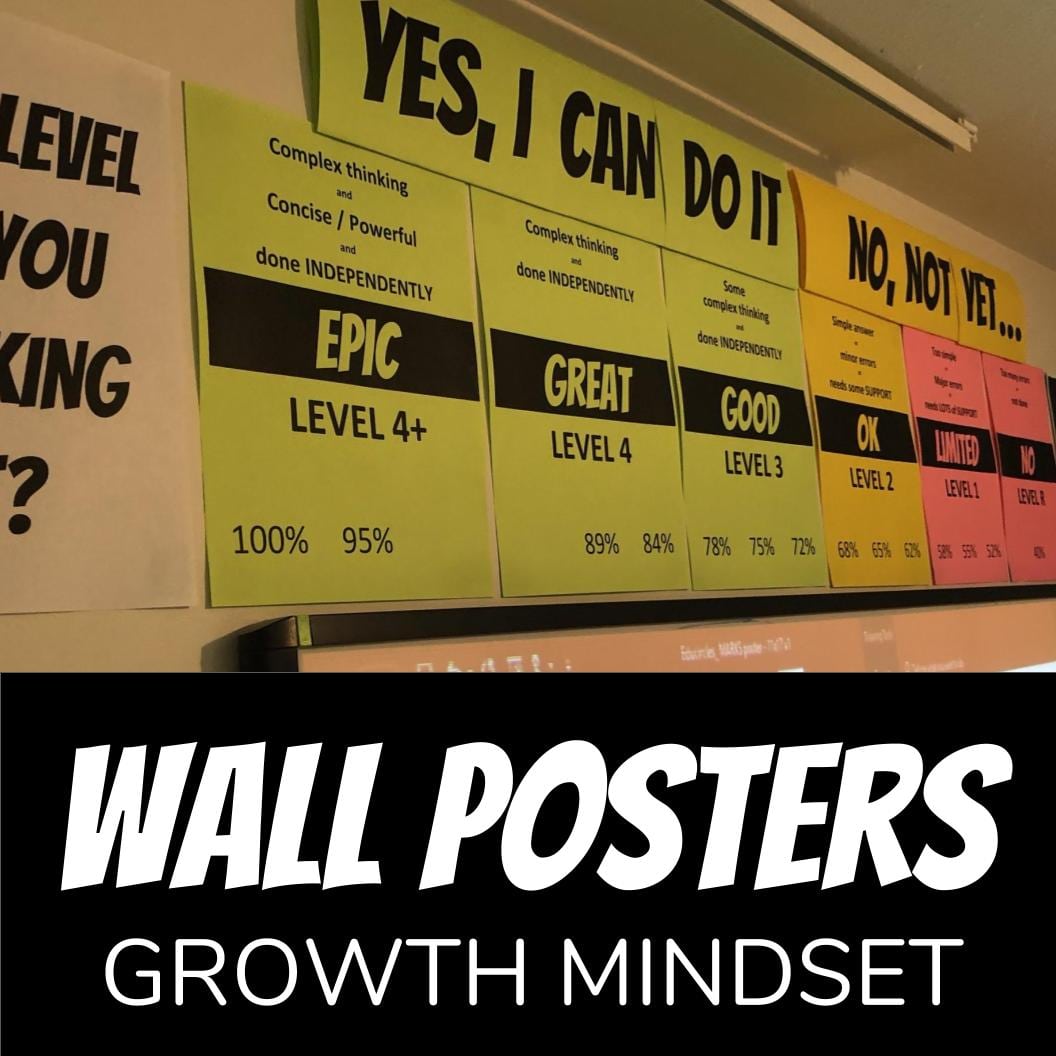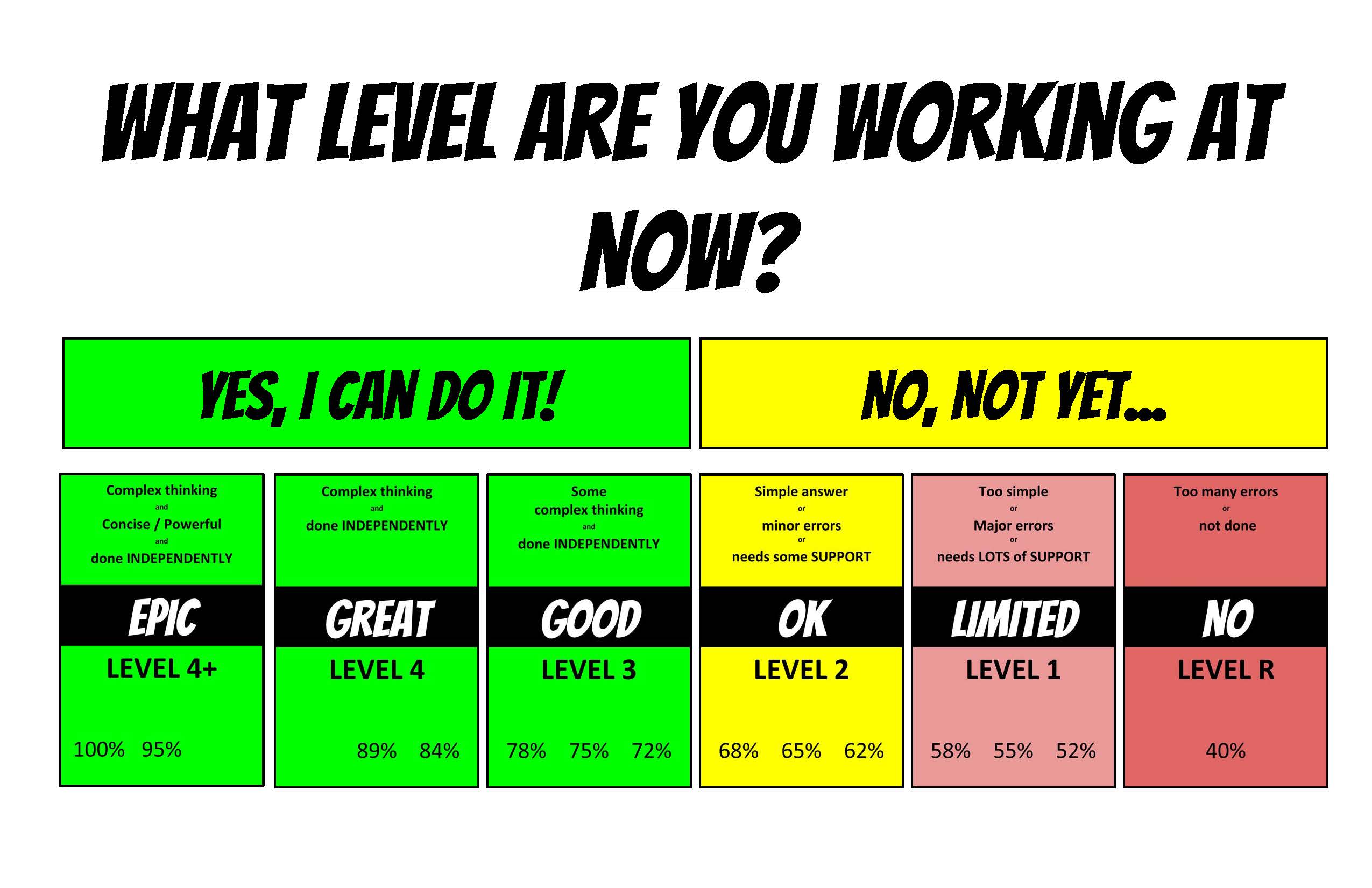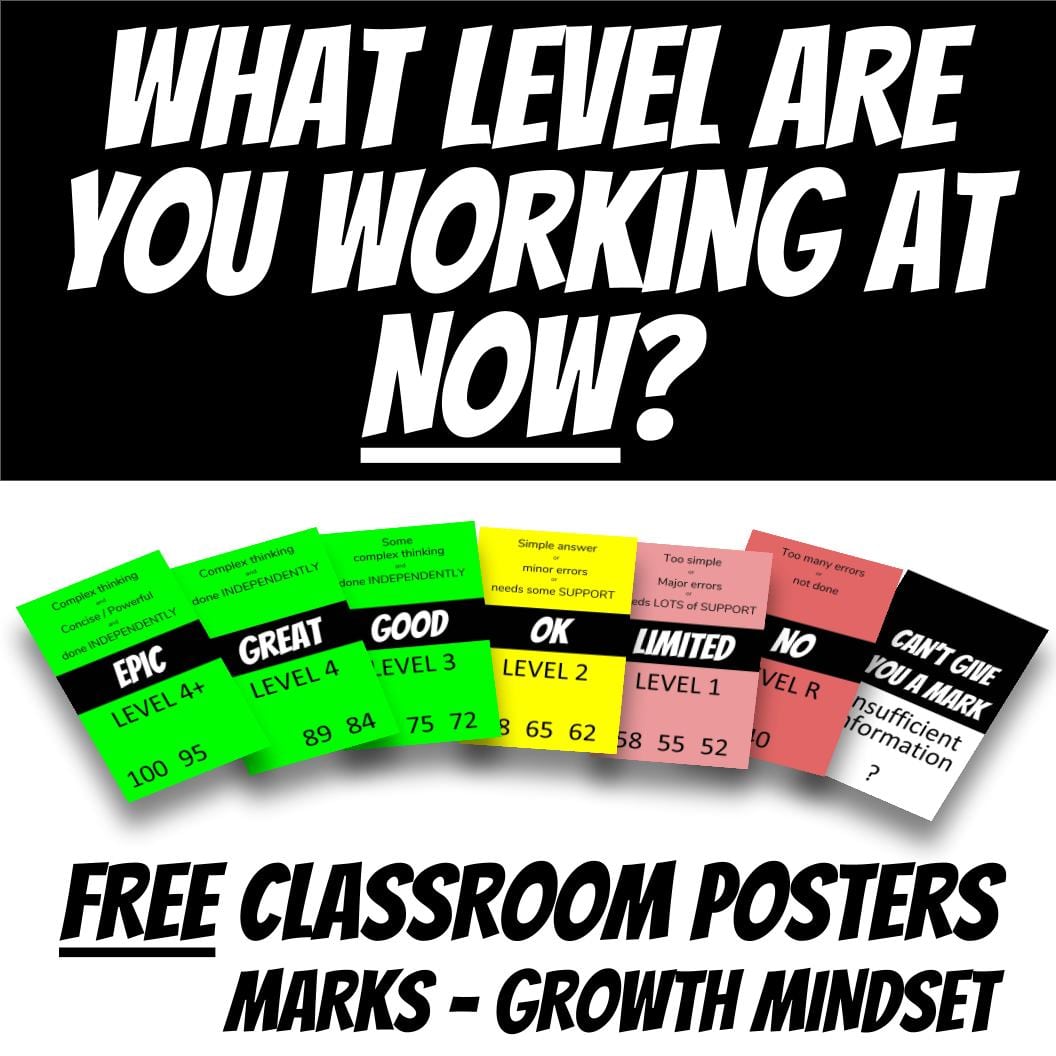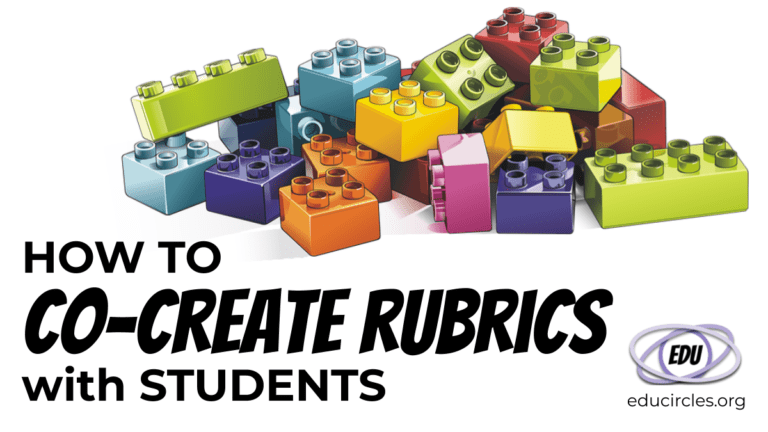FREE CLASSROOM POSTERS connecting marks, levels, and a growth mindset
This is a set of posters that I put above my whiteboard / blackboard at the front of my classroom to help students connect levels to percentage grades to a growth mindset. I print the posters out on coloured paper – green, yellow, and red:
- The “red zone” means, “uh oh, something’s wrong. You need to check what you’re doing.” (Level 1, or Level R)
- The “yellow zone” means, “you’re on the right track and heading in the right direction. (Level 2)
- The “green zone” means “all things are go” and you’re hitting the provincial standard. (Level 3 or higher)
The posters have evolved as I improve my teaching practice. Every year, I tweak them slightly based on what I notice helps students the most.
Originally, they were just posters to help students understand a level 3 was a 75%, a level 3+ was a 78% and a level 3- was a 72%
However, they quickly became a teaching tool to try to help my students understand that student work is a spectrum and that no matter where you are on the spectrum, there are specific steps and strategies you can do to try to move higher up in the “green zone”
You can download a free zipped file from our TpT download site which includes PDF versions of the posters and handouts (so you can print them off right away), as well as a PowerPoint PPT version so that you can modify and tweak the posters to fit your needs.
How I use these Classroom Posters to help student connect marks / levels to percentages to a growth mindset

I put the posters up at the start of September above my whiteboard where they can stay for the entire year. I also give students a physical handout for their binders.
I use these as a reference throughout the year when we are looking at rubrics, student exemplars, project expectations, or handing back marked tests and assignments.
What level are you working at… now?
The key part of the title, “What level are you working at now?” is the word “now.” Part of having a growth mindset is to recognize that everyone can improve, and we can improve by intentional actions and exploring different strategies.
 Often students think if they’re not getting the mark they want, they failed, or they’re stupid, or it’s too hard and they should give up.
Often students think if they’re not getting the mark they want, they failed, or they’re stupid, or it’s too hard and they should give up.
One strategy is to remind students is to add the word, “YET.”
Are you meeting the provincial / state expectations, (or your personal / family expectations)?
There really are only two answers:
- Yes, I am.
- No (not yet.)
Students often want to improve, but they’re not sure how to improve. That’s why at the top of each poster are some general differences between the levels.
You might be in the “green zone” and doing “good” work.
- Well, if you want to improve, you’ll need to figure out how to produce more complex ideas.
- And then the conversation becomes how do I generate more complex answers?
You might be doing “great” in the “green zone” and want to get 95%.
- No problem. For me, a key difference between a “great” response and an “epic” response has to do with conciseness.
- An epic response uses the most powerful evidence to prove a point using very specific and carefully considered words that are both precise and concise.
Or, a student might be in the “yellow zone” and only doing “ok”
- Perhaps this is because they’re providing simple answers with teacher prompting.
- The next step might be to help the student to produce work independently by practicing using specific strategies.
At the start of the year, I do an Ice Cream metaphor lesson to help students see how there can be a wide range of ice cream desserts that vary in complexity… just like how there can be a wide range of student answers that vary in complexity.
A key idea for students is to start to realize that “More, is not always a Four.”
To use Bloom’s Taxonomy as an example, depending on the assignment, listing and restating facts might only get a mark in the “yellow” zone. A student might be surprised that they only got a level 2 because they wrote so much. In their mind, writing more equals getting a better mark.
The posters help focus the conversation on how the quality of ideas become important. Listing a bunch of simple ideas, is still at its core, still simple. Moving up Bloom’s Taxonomy, the conversation could be about comparing ideas, or deciding which idea was the best idea, or figuring out a way to make the best idea, even better. Analyzing, Evaluating, and Creating new ideas are examples of more complex thinking that moves us into the “Green zone”
Of course, all of these examples are general hypothetical situations I share with the students at the beginning of the year.
During the year, when we look at student work, we discuss the actual assignment rubric as a class and talk about success criteria specific to that assignment. But, generally, speaking I find the rubrics tie in well with these posters.
Feel free to adapt these posters to meet your classroom needs.
Download Free Classroom Posters about Marks to Growth Mindset
These posters are posted on our TPT download site: Click to download free classroom posters marks to growth mindset.


